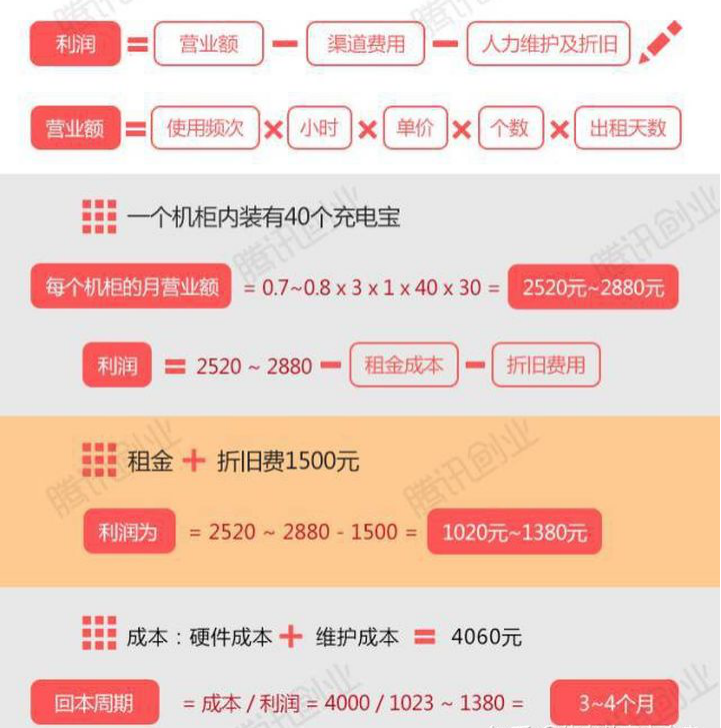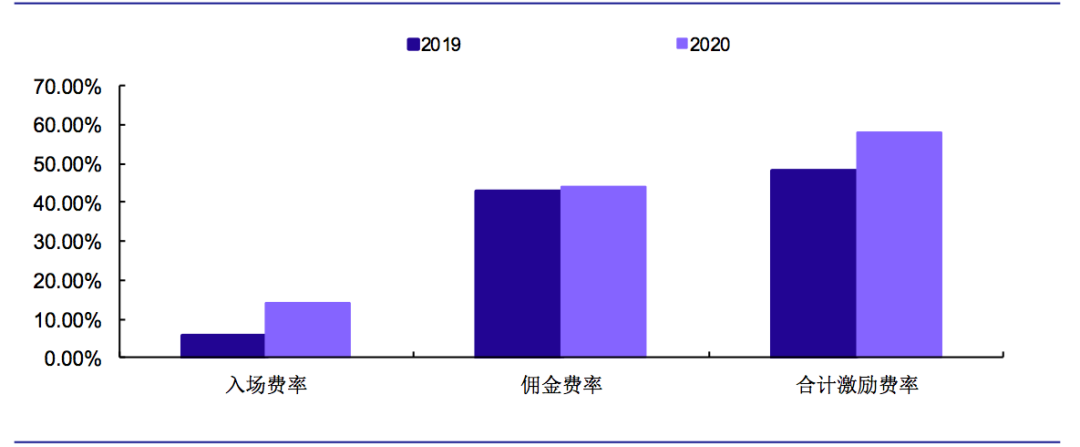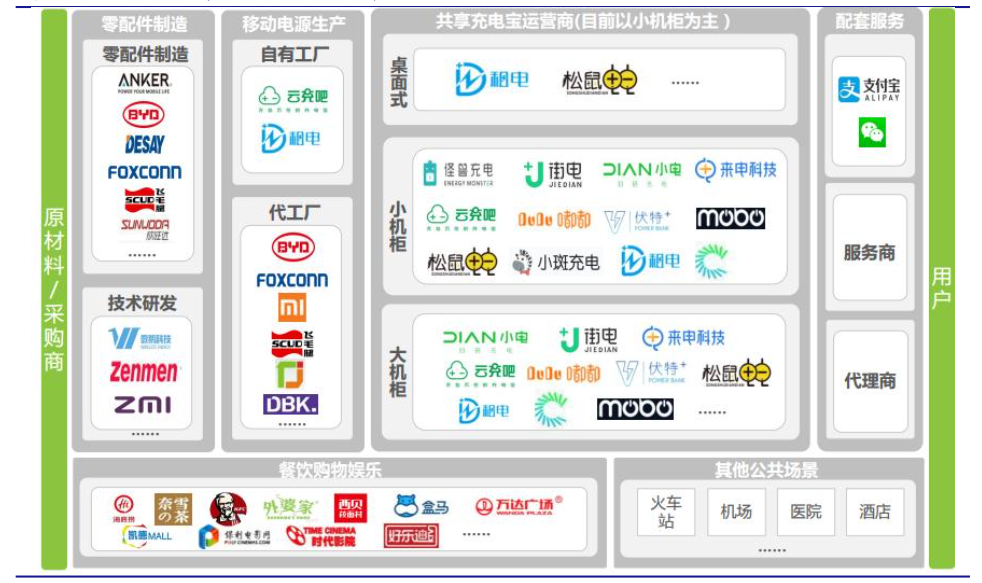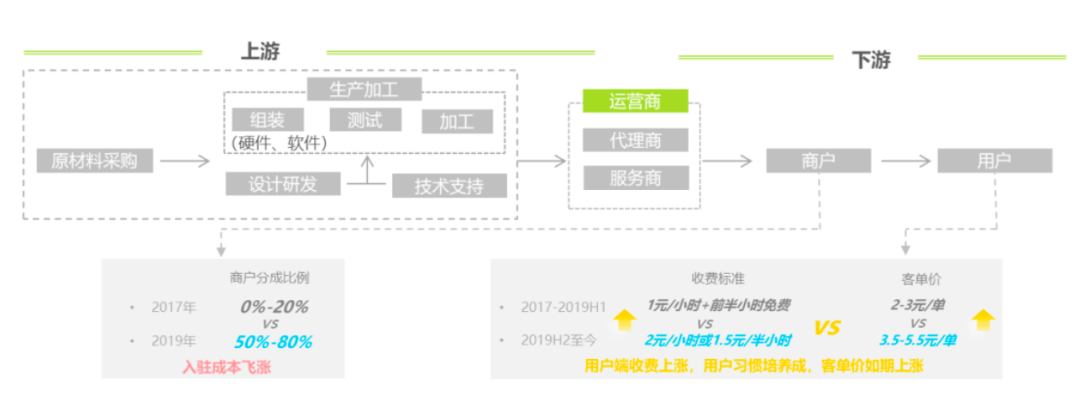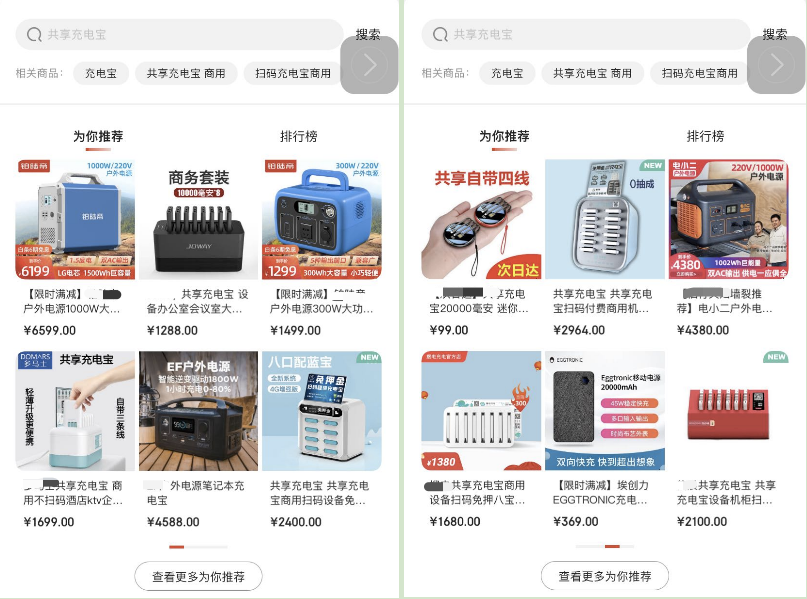The price war will cover the entire life cycle of the industry.
Editor’s note: This article is from the micro-channel public number “brocade” (ID: jinduan006), Author: Gu Yue.
This article is written based on publicly available information, and is only used for information exchange and does not constitute any investment advice.
Monster Charging (NASDAQ:EM) landed on Nasdaq last night, and the shared power bank industry ushered in the first share.
Judging from the business information disclosed by Monster Charging (Monster) in recent years, although it does have a monster-like prosperity (it won the first market share in the third year of its establishment), it has not shown sufficient control ability. “Heavy capital investment, restricted by merchants, and variable status in the industry” is an intuitive feeling after reading his prospectus.
According to the business logic of “important capital investment-gaining market share-raising prices for profit”, if the monster wants to maintain the current industry structure, it will still need huge capital expenditures in the future, and achieving profitability is not easy.
With monster charging as a reference, we tried to clarify the business of charging treasures through 4 dimensions.
01 Can the shared power bank pay back in 3 months?
The answer is: no.
In the past year or two, shared power banks have become a popular commercial project. A large number of OEM products are seeking promotion partners (including service providers, agents, and even individuals and merchants, etc.), and they will all claim this commercial The model has run through, and the return cycle for a single cabinet project (or POI outlet) is nearly 3 to 4 months.
If you only look at cost control and return on investment, the payback period of a single product can basically be controlled within 5 months.
Iresearch has made relevant statistical calculations based on three data indicators: the cost of a single power bank, the average number of rentals per day, and the return of the current cycle. The current payback periods of the leading companies in the industry such as Monster and Street Power are respectively It is 4 months and 4.5 months, while a relatively small company can achieve a payback period of about 2 months.
Figure 1: The profit model of the cabinet type power bank, source: Tencent Venture
According to more detailed calculations, based on the profit model of the above micro-model, the shared power bank project can indeed quickly pay back, and the annual income can reach 2-3 times the previous investment.
However, the cost of product promotion and marketing was not considered in this process:
General OEMRecruitment instructions are partners who have certain social resources or network resources, and ordinary people with this kind of resources are generally unlikely to be born with them. If they want to expand the business smoothly, they will face a huge hidden cost. It is the information that the OEM brand will not directly display. If this part of the investment is counted, how much the payback cycle of the shared power bank project will be extended depends on specific issues and specific analysis.
02 How much is the marketing cost?
It will probably reach 80% of total revenue.
Currently, Monster Charging has a market share of 34.4% in the shared power bank industry. Although it is the highest in the industry, the high market share does not bring due pricing power. The gate of this industry is controlled by downstream businesses.
Monster’s marketing rates in 2019 and 2020 are 67.4% and 75.5% respectively. The fundamental reason for the increase in fees is that merchants require higher entrance fees.
Figure 2: Monster Charging’s incentive ratio to merchants (incentive fee = admission + commission), source: prospectus, Essence Securities Research Center
Marketing expenses mainly include the entrance fee paid to the merchant and the commission share of the service provider (network partner).
Data shows that the marketing expenses of Monsters in the past two years have increased by 55.7% from 1.361 billion yuan in 2019 to 2.121.1 billion yuan in 2020. Among them, the commission share has increased by 45.5% from 822 million yuan in 2019 to 2020. 1.196 billion yuan, the commission share rate was 42.7% and 44.1%; but the entrance fee paid to merchants increased by 2.6 times, and by 2020 it has accounted for about 14% of total revenue.
The reason why merchants are able to demand admission fees strongly is because the shared power bank industry is ultimately a business based on offline traffic. Users don’t mind the brand at all. They only care about whether the product can charge mobile electronic devices. Therefore, whoever’s product settles in the core merchants is equal to a steady cash flow.
The technical content of the shared power bank product itself is not high, and the low threshold means fierce competition in the industry.
03 Are there technical barriers?
Figure 3: The main market entities of shared power banks, source: iResearch, Essence Securities Research Center
Power bank is a typical low-end electronic manufacturing product, and the product itself does not have too many technical barriers to speak of.
The technology of the shared charging cabinet is slightly higher than that of the power bank, which involves power bank identification technology and rental technology. In 2017, Chen Ou of Street Power spent 100 million yuan to purchase three invention patents, including the charging box, the charging replacement system and the charging method, from the “father of the shared charging treasure” Liu Tongxin; the incoming call applied for more than 80 in this regard. Patent, and also said that “latest manufacturers as long as they do absorbing scan code to borrow power bank, it is impossible to bypass our patent.”
But in fact, the entire upstream supply side of the shared power bank is not limited in capacity due to the above patents. For manufacturers, there are still many ways to circumvent the above patent barriers, such as not adopting an absorbing design and using a buckle stand. Style design; instead of box-type cabinets, use arranging cabinets; replace electronic components; redesign circuit boards, etc.
In this regard, Ding Minglei, the former CEO of Cloud Charging Bar, once said, “There must be technical barriers to sharing power banks, but at most three or four months ahead of others, you will probably know what is going on when you find a machine.”
Figure 4: Shared power bank supply chain analysis, source: iResearch
The reason why leading companies such as Street Telecom, Caller, and Monster build patent barriers is actually mainly for the purpose of restraining each other (see the three-year patent war between Street Telecom and Caller), but for most OEM For businessmen, patent litigation by leading companies is a time-consuming and labor-intensive option without substantive results. After all, this is an industry with “low threshold, single model, and easy copying”. The upstream manufacturers are “tens of thousands”, and the downstream brands are the same. “Thousands of thousands”.
Figure 5: OEM shared power bank product, source: screenshot of a certain platform
Figure 6: OEM shared power bank products, source: screenshot of a certain platform
On the major e-commerce platforms, we can easily see all kinds of commercial shared charging devices, and there are also commercial slogans such as “zero commission”, “lifetime warranty”, and “send billboards”; And on the post bar on the website, search for something like “Can shared power bank make money?” You will find that a large number of shared power bank brands are doing commercial promotion, soliciting agents or encouraging entrants to directly buy out the product and equipment.
This shows the proliferation of the upstream supply side of shared power banks, and this also lays the foundation for the serious involution of the industry.
04 What are the variables that affect the industry structure?
The two most obvious variables are Meituan power bank and sinking market.
In 2020, Meituan’s power bank restarted its shared power bank business for the fourth time. Taking advantage of the fluctuating impact of the epidemic on the industry structure, Meituan’s use of its own merchant resources and online The company with the strongest momentum and potential outside of “Beast Three Electricity”.
Figure 7: Offline scene distribution of my country’s shared power bank, source: prospectus, Essence Securities Research Center
Actually, from the perspective of the industry characteristics that shared power banks are attached to, in the next few years, catering establishments will still be the core scenarios for shared power banks to expand POI outlets. Hotels, KTVs, and entertainment venues are all important components, which almost correspond to This is the core business advantage of Meituan. In addition to the fierce price competition in the industry, Meituan also has a great advantage in capital expenditures, and its entry will inevitably affect the current pattern of the industry.
Figure 8: my country’s shared power bank market share, source: prospectus
In terms of trends, Monster’s growth rate is the fastest, but the market share of the second to fourth brands in the industry has begun to decline, and the other camps of Meituan have begun to increase. To some extent, this is also An industry driven by capital.
Another important variable is the new battlefield of sinking the market.
Because the industry has no substantial IP barriers and brand effects, only price affects the outcome of the new battlefield. In order to remove inventory, some upstream manufacturers will share the price of charging treasure equipment at a very low price, giving agents or service providers and other OEM operators enough profit margins, and these operators are likely to give merchants “0” “Ramp” policy is preferential, and for the majority of sinking market merchants, the profit visible to the naked eye is the kingly way, and it is not cost-effective for them to do wedding dresses for brand merchants.
Then opening up the sinking market will be a chaotic battle. Head brands (such as monsters, street electricity, etc.) will not take advantage. With the development of this part of the market, the market structure of the domestic shared power bank industry will also The possibility of major changes.
Figure 9: Distribution of shared power bank cities nationwide in 2019, source: Prospective Industry Research Institute
You should know that in 2019, the distribution of shared power bank cities nationwide is mainly in the first, second and third tier cities, with a share of about 80%, while the market in the fourth and fifth tier cities, which account for 80% of the population, and below is only 20%.
According to this expectation, in the future, industry leaders such as monster charging and street electricity will have a high probability of establishing a competitive advantage by seeking industry access standards. And this is also the top priority to get rid of the current chaos in the industry.
